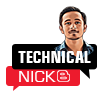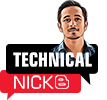The dynamic growth in the IT industry has made a lasting impact on all kinds of businesses. There was a significant shift of businesses online in the last few years. Companies are moving to the cloud since it allows workers to easily access workplace systems and files from anywhere while providing the utmost safety and security of their data. Cloud computing has many other benefits and has become one of the fastest-emerging technologies in the IT industry.
Cloud computing has become the talk of the town. Before you get into the details of cloud computing, it is important to have a clear picture of what cloud computing is and what it does. Let’s begin with understanding the meaning of the term “Cloud Computing.”
What is Cloud Computing?
Cloud computing is the supply of computing services over the Internet, including servers, storage, databases, networking, software, analytics, and intelligence. Cloud computing provides faster, more innovative, adaptable resources, and cost-friendly services.
Cloud Technology is on the rise and new cloud technologies are being discovered. Knowing cloud computing can definitely land you a prosperous job. Starting to gather knowledge and skills from a young age is beneficial. For instance, there are a lot of Benefits of Coding For Kids. but of course, if and only if your child is interested in Information Technology.
Top Cloud Technologies To Look Out For In 2023
In light of the upward trend in cloud technology. Unquestionably, this technology will be a hot topic in 2023. Now, let’s take a look at what kinds of cloud technologies we can expect to see in 2023.
- Multi-Cloud and Hybrid Cloud Deployment
- Edge Computing
- Cloud-Native Applications
- Cloud Security and Resilience
- The AI and ML-Powered Cloud
- Blockchain
- Internet of Things
1. Multi-Cloud and Hybrid Cloud Deployment
Multi-cloud and hybrid cloud refer to cloud deployments that integrate more than one cloud. There is a difference between them in their cloud infrastructures. A hybrid cloud infrastructure combines two or more different clouds, whereas a multi-cloud combines different clouds of the same type.
While multi-cloud combines different clouds of the same type, hybrid cloud infrastructure combines two or more different types. Multiple public clouds are referred to as “multi-cloud.” A business that employs numerous public clouds from various cloud providers includes a multi-cloud setup. In a multi-cloud arrangement, a business uses multiple vendors rather than relying just on one for cloud hosting, storage, and the entire application stack.
2. Edge Computing
Edge cloud computing will reduce the market share for established cloud platforms. In contrast to a centralised cloud network, network edge computing uses more compact, portable, containerized components that are processed on a network of decentralised servers. The servers, data storage, and processors are located as close to the consumers as possible for easy use. Edge cloud computing minimises latency, makes maintenance simpler, and leaves a reduced carbon footprint by reducing the distances between the processor and the end-user points of network activity.
3. Cloud-Native Applications
The term cloud native refers to the concept of building and running applications to take advantage of the distributed computing offered by the cloud delivery model. Cloud-native applications are designed and built to exploit the scale, elasticity, resiliency, and flexibility the cloud provides.

Cloud-native applications are resilient, manageable, dexterous, automated, and observable. This allows users to make high-impact changes frequently and with minimal effort. The architecture makes it possible to build cloud-native applications independently of each other. This means you also can manage and deploy them individually.
4. Cloud Security and Resilience
Cloud security and resilience Solutions ensure continuity and protect businesses from cyber-attacks. As a result, you can assess the threat to your critical assets and improve resilience, either on-premises or in the cloud, according to your needs. Cloud security and resilience solutions can help protect against threats and maintain continuous operations by securing software supply chains and transforming with zero-trust architectures. Moreover, it enables rapid recovery wherever your assets are located. That is the recovery from security incidents like ransomware in minutes, not days or weeks.
5. The AI and ML-Powered Cloud
The limited availability of resources has led to the development of their AI infrastructure, and cloud services for artificial intelligence (AI) and machine learning (ML) are offered. Large amounts of computational power and storage space are needed for data collection and algorithm training, and renting these resources as a service is typically more cost-effective. More and more, cloud service providers use AI internally for a variety of purposes. This involves running the enormous, dispersed networks required to supply storage resources to their clients, controlling the cooling and electricity systems in data centres, and providing the cyber security tools that protect their data.
6. Blockchain
A blockchain is an unalterable shared ledger that records transactions and tracks business network assets. With blockchain, almost anything of value can be tracked and traded, reducing risk and costs for everyone. The major appeal of blockchain is the ability to provide real-time, shared, and completely transparent information that is stored on an immutable ledger that can only be accessed by those who consent to its use. A blockchain network can track orders, payments, accounts, production, and other information. Members share a single view of the truth, so you can see all the details of a transaction, enhancing confidence and increasing efficiency.
7. Internet of Things
One of the most notable upcoming trends in cloud computing is the Internet of Things (IoT). The IoT keeps computers, networks, and servers connected. It facilitates effective communication between distant devices and data gathering for useful operations. Additionally, it helps respond to alerts and help create a safer cloud environment by assisting companies with security measures.

To Wrap Up
So, the above-mentioned are some of the major trends in cloud computing that you’ll witness in 2023. In addition to these, we may also see other trends like serverless computing, cloud monitoring, and disaster recovery in the cloud computing space.
The future of cloud computing looks bright, and that translates into more career opportunities in an ever-growing field. However, to get established in a cloud-based career, you need to master specific skills. If you want to build a career in cloud computing, then now is the time. Cloud technology is on the rise and new cloud technologies are being discovered.
Every business, whether large or small has dependent on cloud computing nowadays. This has created a lot of job opportunities. Get certification in cloud computing or any other related field and kick-start your career now. There are various institutions that is offering a whole range of cloud-based training courses and boot camps, perfect for both the aspiring beginner and as a means of upskilling for the experienced cloud professional. Go ahead and start now.
To Read More Tech Blogs Visit: Technical Nick

















